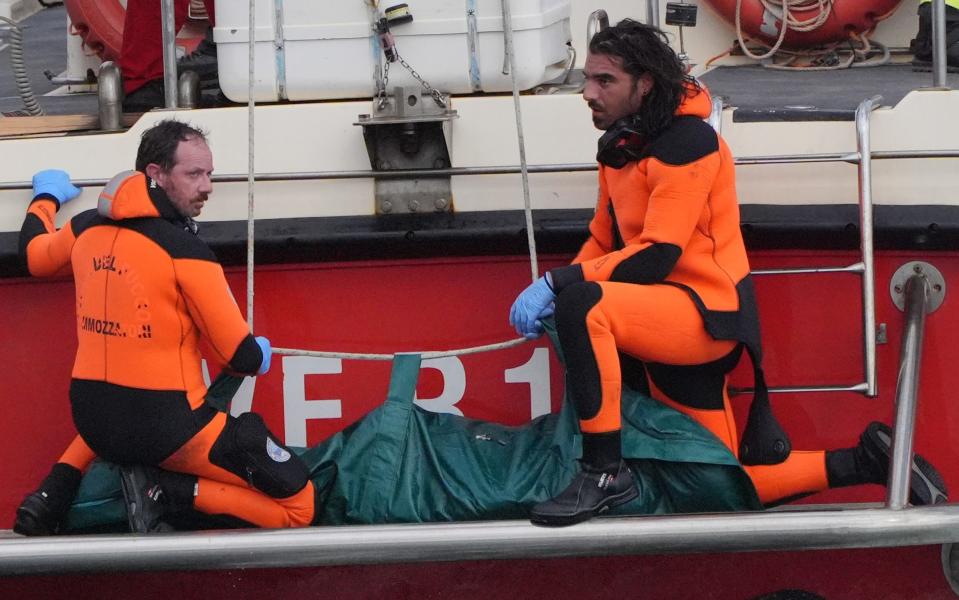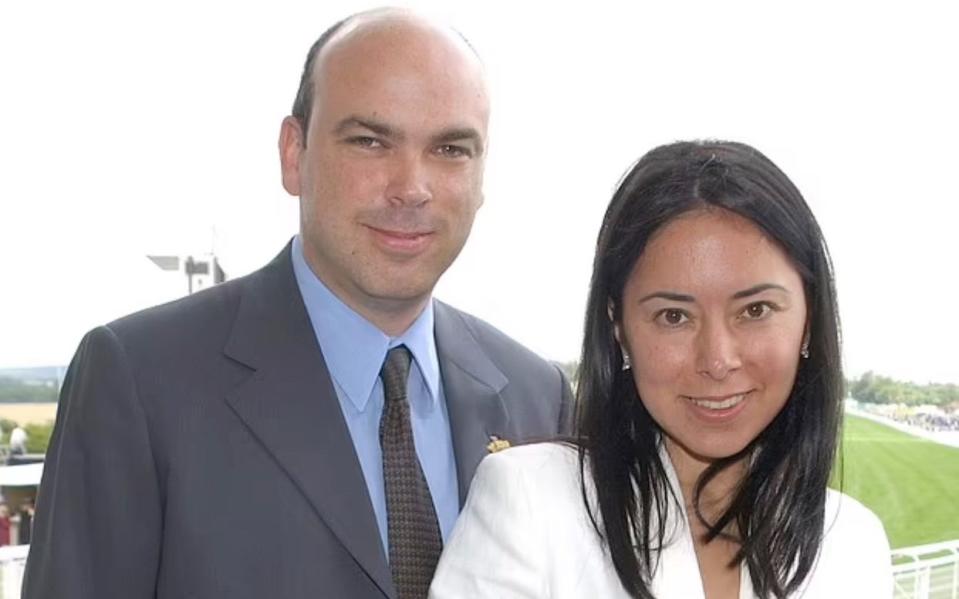Sports
Prosecutors to investigate Mike Lynch superyacht’s keel

Prosecutors will investigate the keel on Mike Lynch’s superyacht after it was found “partially elevated”.
On Wednesday, specialist divers continued to recover the remains of the missing passengers, including the tech entrepreneur and his 18-year-old daughter Hannah.
While exploring the Bayesian 165ft underwater on the seabed, it was reported that the vessel’s retractable keel was partially raised, raising questions about the boat’s stability at the time of the sinking.
The fin-like structure under the hull helped to stabilise the boat, acting as a counterweight to the mast, and stretched to 9.83 metres when the vessel’s centreboard was fully extended, according to a brochure about the yacht’s performance.
Experts have suggested the keel would normally be fully extended for extra stability during bad weather.
Dr Jean-Baptiste Souppez, a senior lecturer in Mechanical, Biomedical and Design Engineering at Aston University, and a fellow of the Royal Institution of Naval Architects, said: “The keel is vital to the stability of sailing vessels, and a deeper keel will provide additional stability.
“However, this is at the expense of draft, meaning shallow-water harbours and anchorages may become out of reach.
“For this reason, large superyachts are typically fitted with a lifting keel, allowing part of the keel to retract inside the vessel and reduce the draft. In such a case, the stability of the vessel is greatly diminished.
“Part of the investigation will, therefore, look into the keel. It is important to note that, even if found partially up, this could result from the impact with the bottom of the sea as the vessel sank, so early external observations may not be sufficient to draw conclusions.”

Tom Sharpe, a former Royal Navy frigate commander and current Telegraph columnist, said: “If it turns out that this keel was retractable, and that was its condition during this accident, then that would change your stability condition a great deal and would probably bring the pendulum effect of the mast into play.
“It doesn’t change what should be standard responses to bad weather at anchor, such as tracking forecasts, keeping a good visual look out and then when it happens, checking the upper deck for watertight integrity/security, starting your engine, taking the weight off the anchor and so on. It just makes them even more important.”
Prosecutors in the nearby town of Termini Imerese have opened an investigation into the disaster and will seek to establish what caused the boat to sink and if any of the crew are criminally liable.
Another early focus of the investigation, which is expected to last months, is likely to be whether the yacht’s crew had failed to close access hatches into the vessel before it was hit by a tornado above the sea, known as a waterspout, off the coast of Sicily.


Survivor interviews
Ambrogio Cartosio, the chief prosecutor of Termini Imerese, and assistant prosecutors must determine what went wrong and whether the sinking of the Bayesian was down to human error or simply a freak weather event.
He and his team have already started interviewing the 15 survivors as well as gathering evidence from emergency workers and divers from the coast guard and the national fire service.
The UK’s Marine Accident Investigation Branch, which has sent investigators to the scene, is also expected to support the prosecutor’s inquiries.
The Italian Sea Group, which owns Perini Navi, the company that built the Bayesian yacht, said that even without the retractable keel the vessel would still be stable.
A spokesperson said: “The yacht was built in 2008 by the Perini shipyards of Viareggio and the last refit was in 2020.
“The controversies about the mast are sterile controversies because the mast, according to those who have seen it, is intact.
“The retractable keel stabilizes the ship, but even without the keel completely out the ship is stable and only a massive entry of water could have caused the sinking which did not happen in a minute as someone wrote.”


Bodies recovered
Teams of specialist divers, including some who took part in the Costa Concordia recovery, spent most of Wednesday searching for the six missing passengers who had gathered on the boat to celebrate Mr Lynch’s acquittal in a fraud trial.
The teams broke through a three-centimetre pane of glass on the side of the yacht yesterday and entered the hull, using special jacks produced by a locksmith in Porticello.
Divers had been frustrated by a 12-minute time limit required when working at a depth of 48 metres and had spoken about the challenges of dealing with narrow corridors and floating debris obstructing their way. They used remotely operated vehicles to help them in the search.
Eventually, two bodies were recovered from the wreckage on Wednesday – believed to be those of Mike Lynch and his teenage daughter Hannah.
Three other bodies were then found, but only two were recovered and brought to shore, Salvatore Cocina, the head of Sicily’s civil protection agency, confirmed. One person remains missing.


As the body bags were taken back to the port of Porticello, dozens of emergency services staff were waiting, and one was seen being put in the back of an ambulance.
The Italian coast guard previously did not rule out the possibility that those missing may still be alive, with experts speculating air pockets could have formed as the yacht sank.
Also missing are Jonathan Bloomer, the Morgan Stanley International bank chairman, and his wife Judy Bloomer, as well as Chris Morvillo, a Clifford Chance lawyer, and his wife Neda Morvillo.
The Bayesian was moored around half a mile off the coast of Porticello when it sank at about 5am local time on Monday as the area was hit by a storm.






